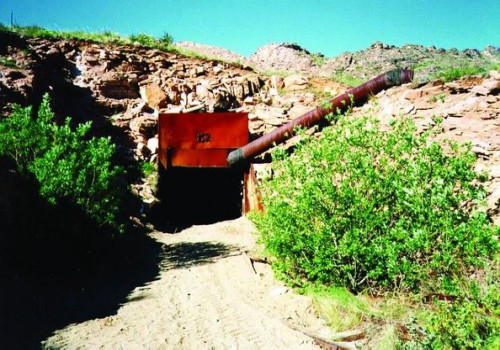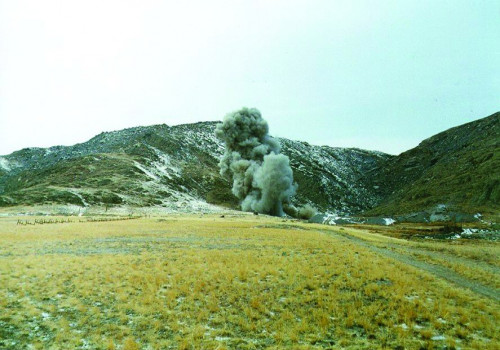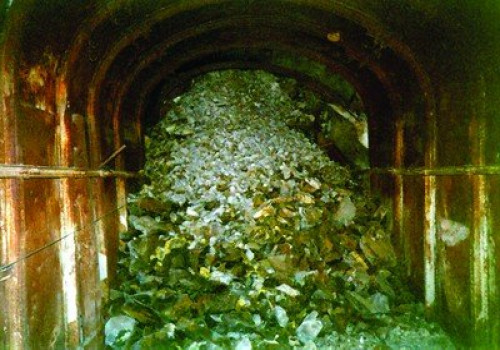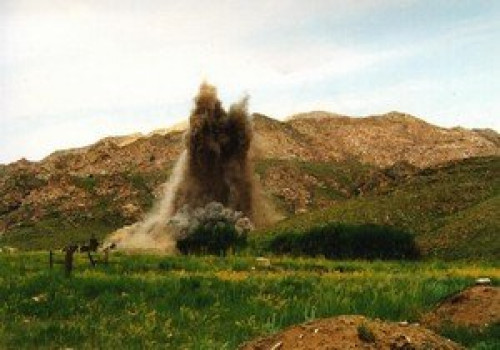Elimination of nuclear testing infrastructure. Tunnels closure at Degelen Mountain Massif
07 May 2022




Project #4. 1996–1999. Elimination of nuclear testing infrastructure. Tunnels closure at Degelen Mountain Massif.
The large-scale project to eliminate the nuclear testing infrastructure was commenced in 1993 under the international agreements to ensure nuclear security, implemented in the framework of ratified Agreement between the United States of America and the Republic of Kazakhstan concerning elimination of silo launchers for intercontinental ballistic missiles, elimination of emergency consequences and prevention of nuclear weapon proliferation dated December 13, 1993, as amended and prolonged (Umbrella agreement between USA and Kazakhstan). USA Department of Defense designated Defense Nuclear Agency (now Defense Threat Reduction Agency (DTRA)) as US executive agent for the agreement implementation.
Ministry of Science and New Technologies of the Republic of Kazakhstan (now – RK Ministry of Energy), with appropriate credentials, designated the RK National Nuclear Center as an executive agent under the program for the Republic of Kazakhstan.
It should be noted that Russian specialists were engaged in the most efforts. Russian side participated in the efforts under the Agreement between the Government of Russian Federation and Government of the Republic of Kazakhstan concerning “Kolba” containers and special equipment, remained at the former Semipalatinsk Test Site dated March 28, 1997 (“Kolba” agreement).
Between 1995 and 1996, RSE NNC RK completed characterization of the tunnels at Degelen Moutain Massif at the former Semipalatinsk test site. The “Degelen” testing site was a location for 209 underground nuclear explosions. Total number of the tunnels is 181, of them 18 remained unused.
The efforts were began with a comprehensive survey of the tunnels, including evaluation of radiation situation. The closure operations were executed based upon the survey results analysis and taking maximal safety arrangements for personnel, with preparation of operation procedure for Degelen Mountain Massif. Tunnel specific closure method was developed for each tunnel, the selected methods were: portal explosion from inside, portal explosion from outside, pressure charge explosion and construction of a concrete plug, or combination of methods.
When closing the tunnels using the method of concrete plug construction, the work was accompanied by complementary (independent) control of concrete quality.
Methods to destroy tunnel portals:
- pressure charge – 20;
- holes drilled from surface – 60;
- holes drilled in tunnel – 48;
- concrete plug – 45;
- horizontal boreholes –11.
The final stage in the portal elimination operation was to backfill the trench or crater resulted from explosion work, and ground leveling to natural landscape.
Operations for portal closure at 181 tunnels including final evaluation of the works to radioecological situation were performed between 1996 and 1999. DTRA representatives supervised the tunnel closure, preparatory and experimental operations on-site, and provided control over the whole operations at Degelen Mountain Massif for the entire operation period.
During working meetings attended by specialists from NNC RK and experts from DTRA discussion covered issues like monthly progress reports, including operation schedule, list of already closed tunnel portals, detailed description of project status, work progress and arising challenges. Off-schedule working meetings had been held, when necessary.
Therefore, the efforts resulted in entirely eliminated and sealed portals of 181 tunnels at Degelen Mountain Massif. In addition, using the energy of chemical explosion, three seismic calibration experiments were performed.
We have completed the elimination of nuclear testing infrastructure in 2000.
Latest news by category:
-
Participation in IAEA International Fusion Research Council Meeting on Controlled Thermonuclear Fusion
25 December 2025
-
NNC RK Participated in CIS Commission Meeting on Peaceful Use of Atomic Energy
17 December 2025
-
Pivotal Role of Kazakhstan in Global Thermonuclear Fusion Research
17 December 2025
-
Enhancing Human Resources Development with Support of JAEA
09 December 2025